Chinese Sword Symbols and Their Significance
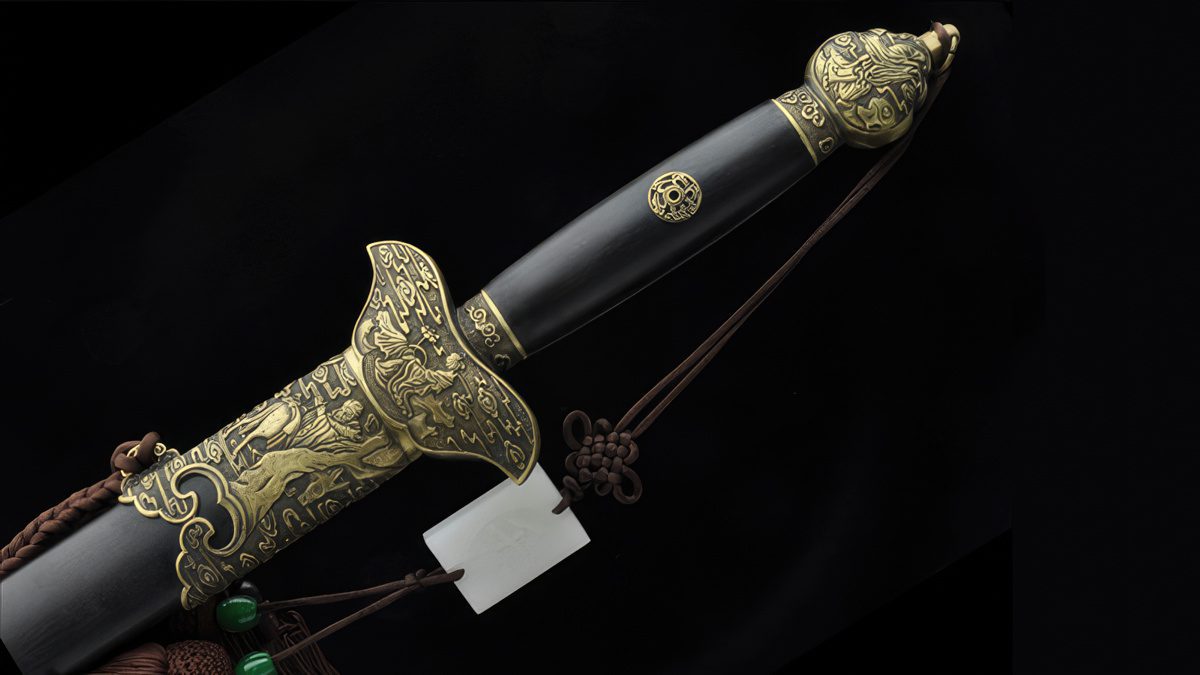
What’s in this article?
Chinese society has always believed in the power of symbolisms, amulets, and talismans. So, it’s unsurprising that swords are engraved with auspicious symbols. These ornaments are beautiful and meaningful to Chinese culture and philosophy. Many represent luck, long life, happiness, prosperity, and wealth, all of which remain relevant in modern times.
Let’s explore the most popular Chinese sword symbols seen on blades and mountings and their significance in Chinese culture.
1. The Big Dipper

In astronomy, the Big Dipper is a group of seven stars in the Ursa Major constellation. In Chinese, it is known as Běidǒu (北斗), which means Northern Dipper. It is frequently worshiped by the Chinese and is considered the throne of the supreme deity Shang-di in ancient Chinese religion and later Taoism.
The Big Dipper is commonly found on sword blades, often in the form of seven brass dots, sometimes with lines connecting them. The symbol is most seen on the Chinese straight sword jian, which collectors call the seven stars jian. It also appears on guandao polearms, or yǎnyuèdāo (偃月刀), and rarely on spearheads and saber blades.

Sometimes, the Big Dipper appears as an inscription on Taoist jian. The inscription 北斗七星南斗六星 translates as Big Dipper and South Douliou Star, in which the latter is a Chinese constellation we know as Sagittarius. In Taoism, the Big Dipper is thought to have strong exorcistic powers and plays a significant role in meditation and rituals.
2. Yin and Yang
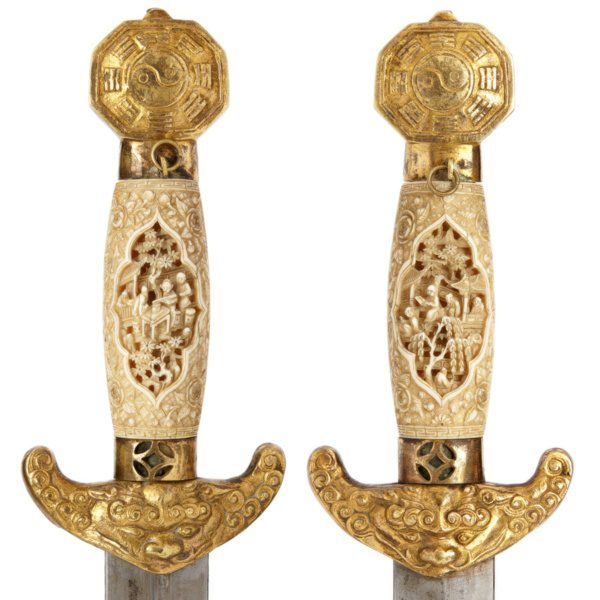
symbol – Credits: Mandarin Mansion Antiques
In Chinese philosophy, the Yin and Yang are opposing but connected forces that underlie everything in nature. It is based on the principle of dualism; the Yin represents the female, earth, moon, and darkness, while the Yang symbolizes the male, heaven, sun, and light.
Also known as the taiji symbol, the Yin and Yang comprises a circle divided into two, and each half contains a smaller circle of the opposite color. Some Taoist jian features the Yin and Yang symbol on the pommel or sword blade.
3. Bagua or Eight Trigrams

The Bāguà (八卦), meaning Eight Trigrams, consists of combinations of three lines, broken or unbroken, arranged in a circle. In Chinese philosophy and belief, each trigram has its own attributes or virtues and refers to a particular element, animal, and direction, typically used in divination. In Taoism, each of the trigrams represents a Taoist immortal.
The Eight Trigrams often appear on the straight sword jian, usually on pommels and blades. Some octagonal pommels feature the Yin and Yang at the center of the symbol. Some sword blades also feature the deconstructed form of the Eight Trigrams. Some believe it has the power to ensure prosperity and avoid misfortune.
4. Bats and Longevity Symbols
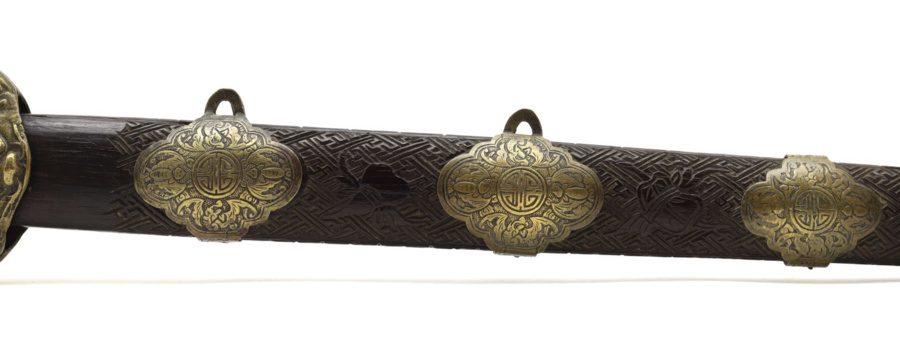
In Chinese belief, bats are symbols of happiness and longevity. The Chinese pronunciation for the word bat is fú, which is the homonym of 福—happiness, good fortune, blessing, and prosperity. The Chinese god of happiness, Fuxing, is sometimes shown as a bat, symbolizing good luck.
On the other hand, shou (壽) is the Chinese character for longevity and is often used to offer wishes for long life. Together, these symbols form the pun fúshòu (福壽), which means a long and happy life. Some jian mountings, especially the fushou type, feature both stylized bats and longevity symbols on the handguard, pommel, and scabbard fittings.
5. Swastika
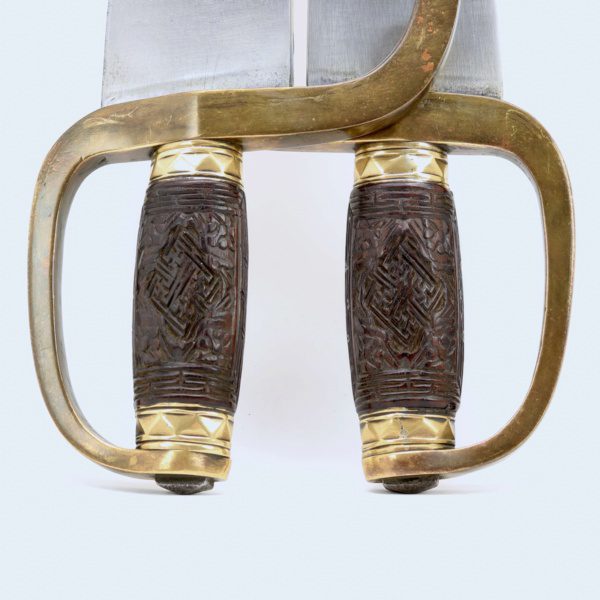
The term swastika comes from the Sanskrit svastika, which means conducive to well-being. In the Buddhist tradition, it represents the footprints of the Buddha. When Buddhism spread in China and Japan, the swastika also became widespread, symbolizing prosperity, abundance, and long life.
Interlocking patterns of swastikas are sometimes carved on the sword’s grip or featured on the guard of Chinese swords, implying that the owner wishes lots of luck in his life and his family’s bloodline.
6. Dragons
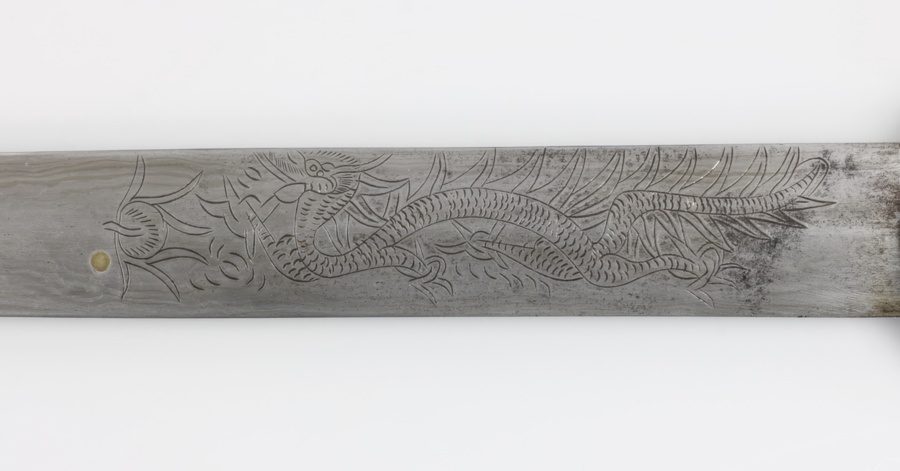
Unlike the Western dragon, the Chinese dragon is regarded as a symbol of goodness, strength, and the spirit of change. Some decorations on sword mountings and blades feature dragons chasing a pearl, typical on Chinese imperial coats of arms from the Han to the Qing dynasty.
A five-clawed dragon was the emblem of imperial power, worn by the emperor and his sons. A four-clawed dragon was restricted to the princes of the third and fourth rank, while certain officials used a serpent-like creature with five claws as their emblem.
Kui Dragons

The kui is a primitive form of a dragon, and kuíwén (夔紋) is a Chinese motif that incorporates these primitive dragons. They are one-legged beasts and are generally seen as benevolent creatures that restrain greed. However, there are various forms of dragons in Chinese mythology and emblems.
In sword mountings, the kui dragons often look like abstract motifs or scrollwork with dragon faces in the designs. These kuíwén patterns were inspired by those seen in ancient Chinese bronzes, which were prized collectibles among the emperor and Chinese elites.
Chīlóng

A subspecies of a dragon, the chīlóng (螭龍) is a rain or water dragon, recognizable by its salamander-like appearance and a forked tail. These dragons are considered immature creatures that have not yet grown horns. In sword mountings, they often represent hopes and aspirations and are not associated with imperial status.
7. Tāotiè
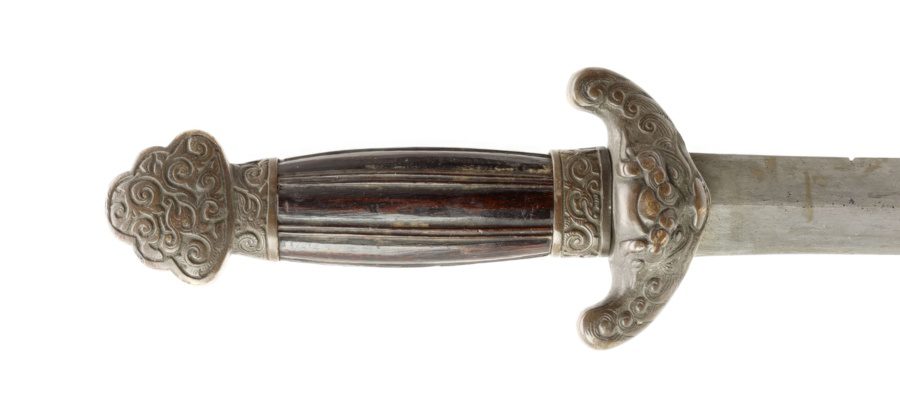
A tāotiè (饕餮) is a mythical creature most recognized for its zoomorphic mask. Its name means glutton, likely derived from its gluttonous nature as an ever-devouring beast. Many believe it was a warning against gluttony or self-indulgence, while others suggest it may be a protective, totemic, or representation of the forces of nature. The symbol often appears on zoomorphic sword guards of jian, in a backward-swept form.
8. Lotus

The lotus flower is considered sacred in Eastern cultures and holds various symbolisms, such as purity, rebirth, faith, and integrity. The lotus emerges from the muddy depths and grows toward the surface, exposing itself as a pristine flower. In Buddhism, the lotus is one of the eight auspicious symbols and represents the path toward enlightenment.
The lotus motif is often found on sword mountings, from sword guards to ferrules and pommels. The most common lotus motifs are engraving or pierced metalwork, such as stylized lotus petal borders on sword guards. Some Taoist jian, which feature several Taoist motifs, are also equipped with a lotus-shaped guard, likely associated with religious practice.
9. Bamboo
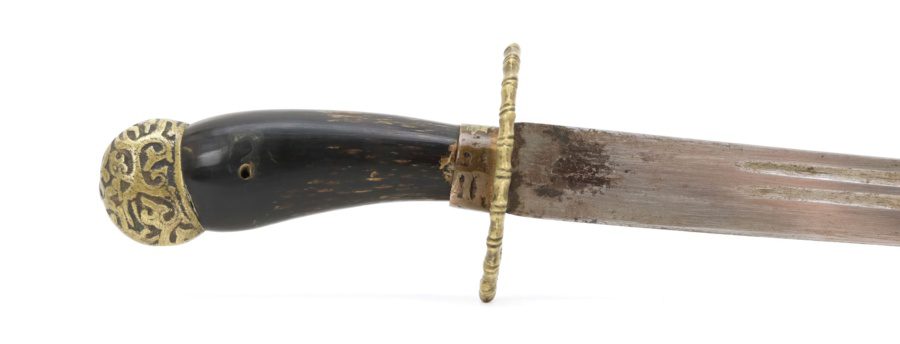
Bamboo is an important plant in Chinese culture and mythology. It serves as a symbol of longevity, likely due to its durability and the fact that it flourishes throughout winter. Bamboo motifs are common on Chinese sword guards, usually as decoration, such as bamboo-sectioned rims.
10. Coins
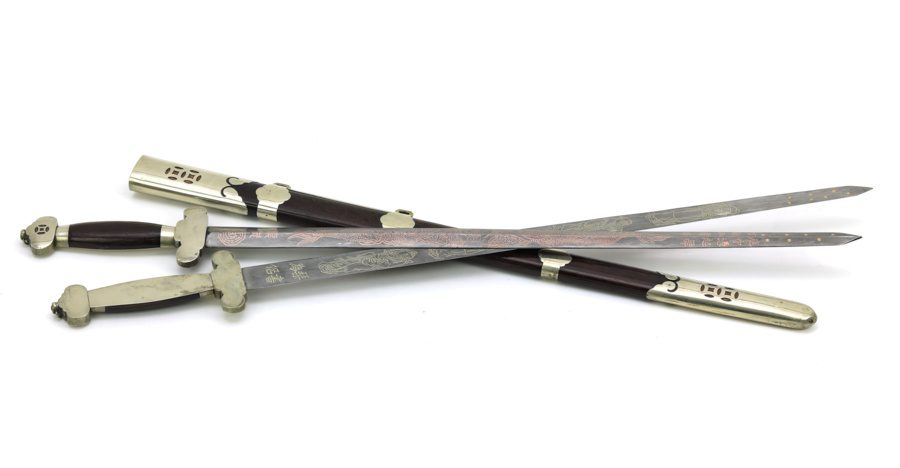
The Chinese coin symbolizes prosperity and often doubles as an ornament and amulet on sword mountings. Coin cutouts are popular ornaments in Southern China. Some sword mountings, including pommels, ferrules, and suspension bands, are sometimes pierced with stylized coin motifs.
11. Mantra
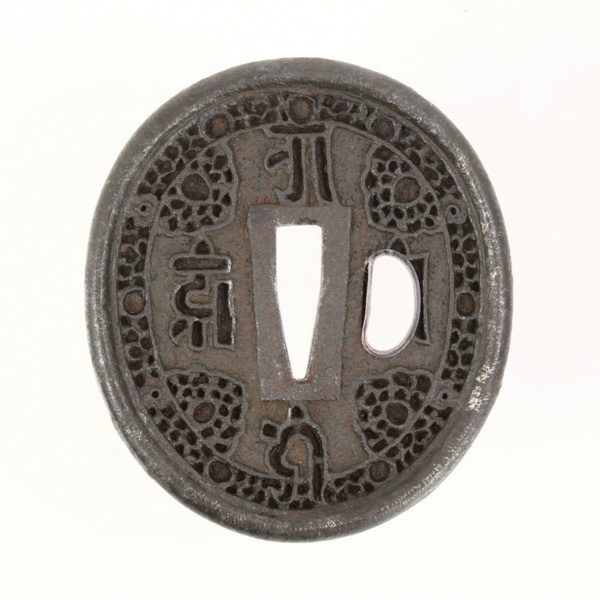
Some Chinese sword guards feature auspicious markings, such as a mantra for meditation. A notable example features the well-known mantra oṃ ā hūṃ in Lantsa script, which is thought to signify the trinity of body, sound, and spirit. The first letter represents the syllable om, which is said to embody the essence of the entire universe.
The mantras written in Lantsa script were also common in helmets of Manchus and Mongols, who were Tibetan Buddhists. They were even worn by Qianlong emperors and later by high-ranking military officials.
12. Emblems of the Eight Immortals

One of the most recognizable themes in Chinese legend and artwork, the Eight Immortals is a group of legendary figures who attained immortality. Each has his own story and emblem to signify his power.
Among the emblems of the Eight Immortals are the gourd, fan, sword, bamboo drum, castanets, flute, lotus, and flowers. Some Taoist jian swords feature the depictions of figures themselves on blades, while some scabbard features carvings of items associated with the Immortals.
Conclusion
Many believe that symbols have the power to change one’s life. It is therefore not surprising that many sword owners favored sword mountings with auspicious symbols to attract good fortune or protection in all aspects of their lives. Some Chinese sword symbols that represent happiness, luck, prosperity, wealth, and long life remain objects of interest among collectors.




